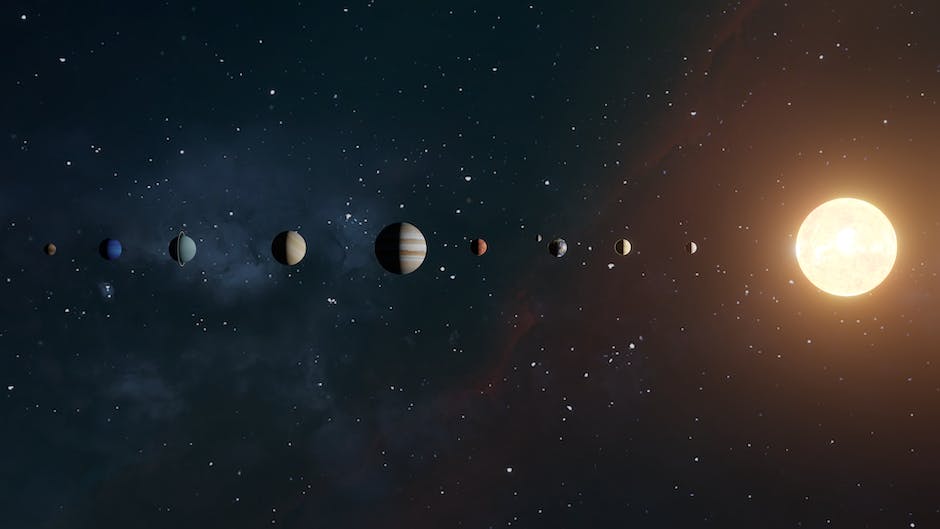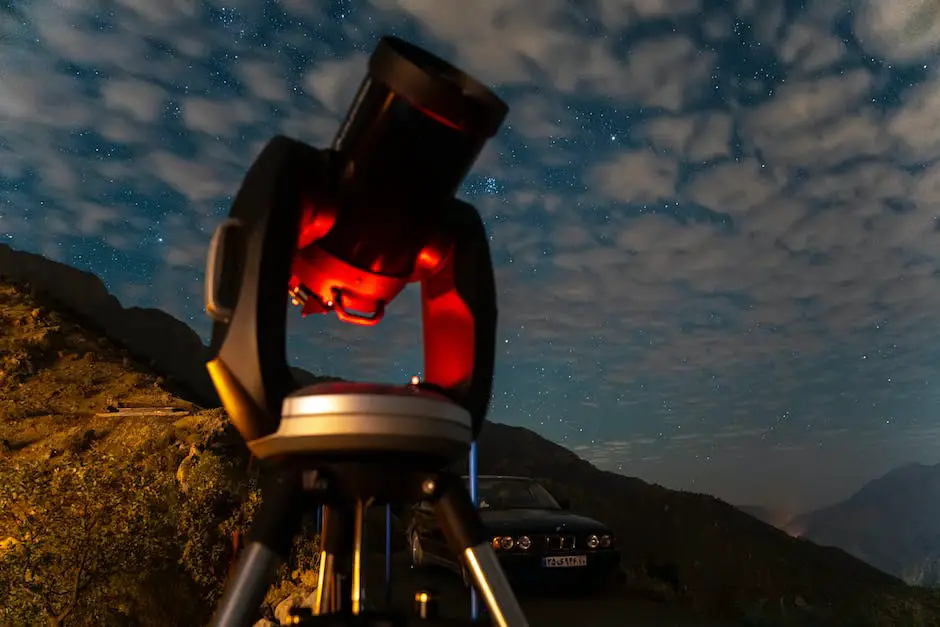Imagine a minor planet, diminutively nestled within the confines of our solar system, embarking on an orbit so elongated and eccentric it takes approximately 11,400 years to complete one journey around the Sun. This is Sedna, an enigmatic celestial body that sits at an extraordinary distance from our home planet, making it a unique solar system inhabitant. Colored a deep red, another curiosity attributed to its uniqueness, Sedna is a relatively large body in the outer fringes of our Solar System. Though currently not identified to host any moons, reigning queries linger, fueled by its lengthy rotation period suggestive of potential moons.
Understanding Sedna
Discovery of Sedna
Sedna, officially cataloged as 90377 Sedna, is a minor planet in our solar system. The discovery of Sedna was announced on March 15, 2004, by a team of astronomers led by Michael E. Brown. The team observed Sedna using the 48-inch Samuel Oschin telescope at Palomar Observatory near San Diego, California.
Sedna’s Naming
The term “Sedna” came from Inuit mythology, referring to the goddess of the sea who lived in the depths of the Arctic Ocean. This naming signifies Sedna’s faraway position within the solar system. The International Astronomical Union followed standard protocols before officially assigning the name Sedna in September 2004.
Unique Characteristics of Sedna
Sedna is considered unique due to its highly elliptical and distant orbit. It is based in the outermost regions of the solar system, often classified within the hypothetical Oort Cloud – a mass of icy bodies believed to be the place of origin for long-period comets. The Sednoid class, named after Sedna, was also proposed because Sedna’s orbit is unlike that of typical trans-Neptunian objects.
Color, Size, and Composition of Sedna
Sedna is approximately 995 km in diameter, making it one of the largest bodies in the outer solar system. It sports a reddish-brown color, possibly due to hydrocarbon or tholin-like substances on its icy surface. Its composition is believed to consist of a mixture of water, methane, and nitrogen ices, with a rock-ice core.
Sedna’s Orbit
Sedna orbits the sun once about every 11,400 years, with its perihelion (closest approach to the sun) still farther out than any known object in the Solar System, excluding long-period comets. While the extent of Sedna’s orbit helped scientists understand the nature of our solar system’s farthest reaches, it also sparked curiosity about how an object could be hurled into such an odd orbit.
Sedna’s Potential Moon
When Sedna was first sighted, astronomers theorized it might possess a moon due to its lingering rotation period equal to about 10 Earth days. Detecting a moon around Sedna was a challenging task due to its extreme brightness and immense distance from our planet. Subsequent observations, spanning over numerous years, failed to identify any orbiting moons around this remote dwarf planet. Yet, the absence of further observational data means the existence of a moon can’t be totally dismissed. Thus, the potential presence of a moon or moons around Sedna remains a captivating mystery within astronomical research.

Sedna’s Moons
Sedna: A Far-Flung Cosmic Sphere
Sedna, a frigid dwarf planet, dwells at the outer edges of our solar system and has piqued interest since its discovery in 2003. Named after an Inuit sea goddess, it traces a staggeringly long elliptical path around the Sun from a whopping distance of approximately 8 billion miles. This exceedingly extended orbit takes a staggering 11,400 years to complete, positioning Sedna among the most remote and solitary objects ever discovered by astronomers.
No Known Moons for Sedna
Although there are thousands of dwarf planets in our solar system, Sedna stands out among them. What is particularly intriguing to scientists is Sedna’s unusually slow rotation. A day on Sedna lasts about 10 hours, compared to Earth’s 24-hour rotation. Most celestial bodies have their rotation periods accelerated due to the gravitational pull of their moons. Because of this, astronomers have expected to find moons orbiting Sedna. However, despite extensive observing campaigns, no moons have been detected so far.
The Influence of rotation on Moon Hypothesis
One theory for Sedna’s slow rotation centers on the possibility of an undetected moon that’s responsible for this sluggish spin. However, astronomers continue their search for moons around Sedna to explain its atypical rotation speed. Another hypothesis holds that the slow rotation might be due to an unseen ring around the dwarf planet. The absence of moons and the possible presence of rings remain topics of ongoing research in the world of astrophysics.
Long-range Observations and Future Study
Astronomers have used several methods to scan for moons in the Sedna system. High-resolution imaging and careful analysis revealed no moons or ring systems around Sedna as small as 1 kilometer across. Researchers are nevertheless very careful about not declaring the system moonless, since moons as small as 3 kilometers are yet undetectable.
Moreover, the fact that Sedna is so distant makes observations challenging. The Hubble Space Telescope—our best bet for spotting a moon—can only do so much due to its limited field of view. However, the upcoming James Webb Space Telescope, with its advanced capabilities, may shed more light on Sedna and its moon situation.
Decoding the Mystery of Sedna
The Dwarf Planet, Sedna, fascinates scientists with its unexplained mysteries. Its unusual characteristics, such as lack of any known moons, slow rotation, unique orbit, and breathtaking isolation, have sparked intriguing conjectures about its origin, formation, and evolution. While no confirmed evidence of moons around Sedna currently exists, it remains a hotbed of continual exploration and examination among the scientific community.

Importance of the study of Sedna
The Significance of Sedna Studies
Dwelling in the deepest realms of our solar system lies Sedna, a small celestial object that has become a point of global scientific intrigue due to its exclusive astronomical features and the allure of potential moons. This icy, far-off trove is believed to hold pivotal clues that can unlock the secrets hidden within the narratives of our solar system’s birth and evolution. Exploration and study of Sedna could set the stage for us to gain a broader understanding of cosmic events and the nascent phases of our own solar system. It effectively bridges the gap between the charted and uncharted domains of our vast universe, making the distant cosmos just a bit more graspable.
Sedna and the Solar System’s Formation
Studying Sedna and its potential moons can offer significant insights into understanding the solar system’s formation. As one of the most distant objects in our solar system, its size, orbit, and composition front a unique glimpse into the early solar system, particularly the era of planet formation. It may help to confirm or refute proposed theories about planetesimal formation, the migration of the gas giants, or the origins of trans-Neptunian objects. Therefore, its importance lies in the fact that it’s like a time capsule, capturing vital clues about the environment in which our solar system was born.
The Compactness of Sedna’s Proposed Moon Orbits
An account of Sedna being a binary object or having a moon/moons of its own brings many questions to light about the compactness of these potential moon orbits. If Sedna does have a moon, understanding its orbital behavior would contribute significantly to our understanding of the broader dynamics of the outer solar system. It would possibly provide new information about gravitational interactions in the outer solar system, and potentially explain more about how distant objects like Sedna are shaped by these dynamics. The compactness or tightness of any moon’s orbit around Sedna could further reveal information about the latter’s mass and density, key factors to understand the composition and structure of distant solar system objects.
Exploring Life Possibilities on Sedna
Being at a considerable distance from the sun, one might question the possibility of life on Sedna, given the freezing temperatures and harsh conditions. However, quite interestingly, the existence of water ice on its surface alludes to the likelihood of a subsurface ocean, which might nurture primitive life forms. Despite the seemingly unfriendly environment, the scientific community is engrossed with the study of Sedna; it is not merely about an icy celestial body, but a prospect to uncover new facets in astrobiology and explore life potential beyond our immediate perimeters.

Current and Future Exploration of Sedna
The Discovery and Exploration of Sedna
The discovery of Sedna, a trans-Neptunian artifact, is attributed to Mike Brown and his team at the California Institute of Technology in 2003. Identified as a remote and sluggish object through powerful telescopes, it was later christened Sedna. Though it’s not classified as a planet, Sedna is a part of the scattered disc, a circumstellar disc in the extreme outer realm of our Solar System and is considered to be linked to the Oort Cloud, albeit being relatively closer to the sun.
The excitement burgeoned post its discovery, as Sedna was labeled as the second most reddish object in our Solar System after Mars, indicating the presence of organic compounds. It also bewildered the scientists with its extraordinarily long orbit – it takes about 11,400 years for it to complete one orbit around the Sun.
Ever since the revelation, no other missions have been embarked towards Sedna. Yet, the unique features and the contributing factors have intensified the curiosity in the scientific community, stressing the need for more detailed and extensive explorations.
Current Studies
Currently, Sedna is being studied largely through ground and space-based telescopes. Contrary to common icy bodies in the outer Solar System, such as comets that display a bluish color, Sedna is noted for its distinct reddish appearance. Scientists speculate this red color is due to the presence of complex organic molecules or tholins on its surface.
It also has an highly elongated and distant orbit, extending far beyond the Kuiper Belt. It remains a matter of debate among scientists whether Sedna is a member of the hypothesized Oort Cloud, or if it originates from a disc of objects beyond the Kuiper Belt.
Hubble Space Telescope observations indicate that Sedna rotates once every 10 hours, implying it’s either spherical or has a slight elongated shape. Moreover, Sedna apparently does not have any moons, a revelation reached after repeated visual checks via telescopic imaging.
Future Exploration Plans
A direct exploration of Sedna is currently beyond our reach, as it would require advanced technology and extensive time and resources. Some of the proposed missions to explore the outer Solar System, such as the Innovative Interstellar Explorer and Interstellar Probe, could potentially incorporate a flyby of Sedna if it aligns with their trajectories.
NASA’s New Horizons mission, launched in 2006, is currently exploring other trans-Neptunian objects, and the data gathered could give us more insight about Sedna. Furthermore, the James Webb Space Telescope, scheduled for launch in 2021, will provide extensive capabilities to observe distant Solar System objects like Sedna in much detail.
Technological Advancements
Decoding the mysteries of Sedna will likely require substantial technological advancements. While visual studies through telescopes have offered significant insight, they fall far short of the comprehensive examination that would be possible through an orbiter or a flyby mission.
One critical technology required for direct exploration is propulsion technology. Current propulsion methods are inadequate for such a distant journey within a reasonable timeframe. Moreover, power generation for a spacecraft traveling such a long distance is also a considerable challenge, as Solar power becomes inefficient in the outer Solar System.
Additionally, long-term communications technology is required to maintain a connection with an exploratory craft over the long mission duration and vast distances. Scientists and engineers are continually working to solve these challenges, pushing the boundaries of human innovation and exploration.

Surely, Sedna continues to intrigue and will remain at the forefront of scientific study and space exploration. It holds the key to many unexplored questions about our solar system’s origins, potentially augmenting our understanding of planetary formation and evolution. Exploratory efforts, led by cutting-edge technological advancements, promise enticing revelations. As we keep venturing further into the uncharted territory of the outer solar system, the journey to Sedna might offer more than mere scientific facts. It stands as a testament to human curiosity and our ceaseless endeavor to piece together the cosmic puzzle that is our universe.
![]()
